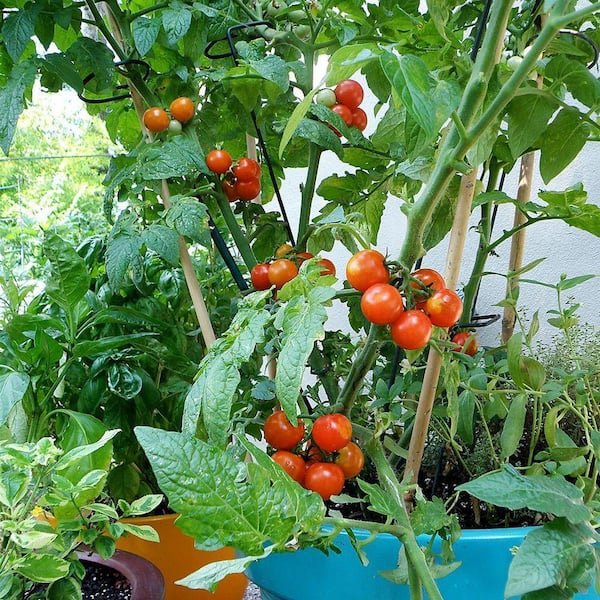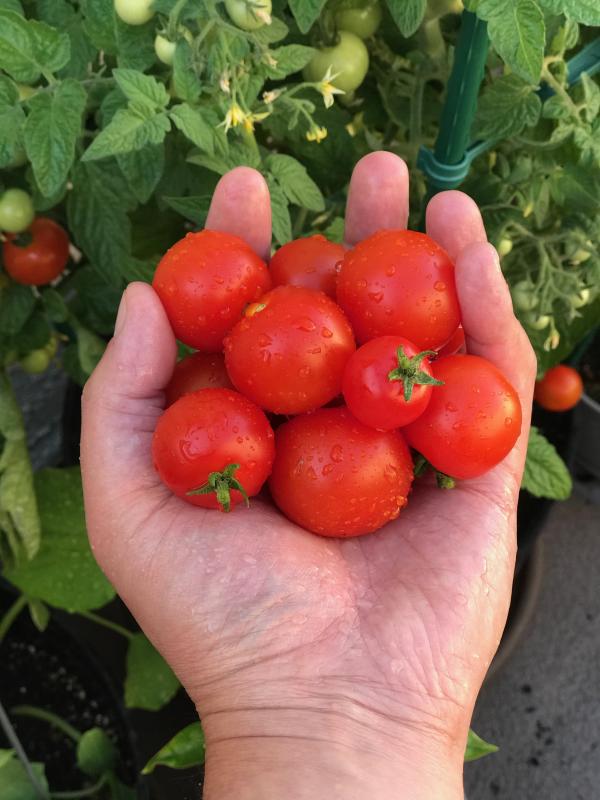So, you’re curious about the size of husky cherry red tomatoes, huh? Well, let me tell you, these little gems are quite the impressive bite-sized wonders! When it comes to their size, you’ll be pleasantly surprised to find that they may be small in stature, but they certainly don’t lack in flavor or yield. In fact, these vibrant red tomatoes are known for their compact and bushy growth, reaching a height of about 2 feet. Their petite fruits typically measure around 1 inch in diameter, making them the perfect snack or addition to any salad. But don’t let their small size fool you, because these husky cherry red tomatoes pack a sweet and tangy punch that’s sure to delight your taste buds. So, if you’re looking to add a burst of flavor to your garden or kitchen, look no further than these delightful little tomatoes.
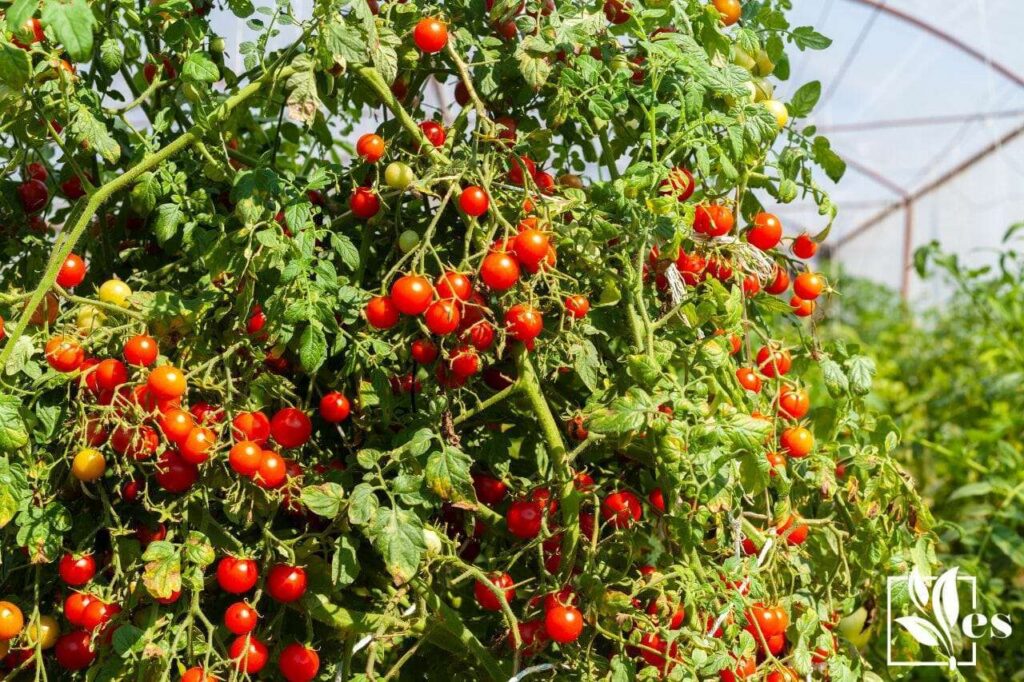
Determining the Size of Husky Cherry Red Tomatoes
Husky Cherry Red tomatoes can vary significantly in size, and there are several factors that can influence their final dimensions. Understanding these factors is important for both amateur gardeners and commercial producers looking to maximize their yield and quality.
Genetic Characteristics
Genetics play a crucial role in determining the size of Husky Cherry Red tomatoes. This variety is specifically bred to produce small to medium-sized fruits, typically ranging from 1 to 1.5 inches in diameter. The genetics of the plant can influence the overall growth and development of the tomatoes, including their size.
Environmental Factors
Apart from genetics, the environment in which the plants grow also plays a significant role in determining the size of Husky Cherry Red tomatoes. Factors such as temperature, humidity, sunlight, and airflow can all impact the growth and development of the fruits. Adequate sunlight and a consistent temperature range between 70 to 85°F are generally recommended for optimal fruit development.
Cultivation Methods
The cultivation methods employed can also affect the size of Husky Cherry Red tomatoes. Factors such as planting density, pruning, training techniques, and nutrient availability all contribute to the plant’s overall health and fruit development. Providing the appropriate care and following recommended cultivation practices can help ensure that the tomatoes reach their full size potential.
Average Size of Husky Cherry Red Tomatoes
In terms of size, Husky Cherry Red tomatoes are considered to be on the smaller side compared to other tomato varieties. Understanding the average dimensions and weight of these tomatoes can help growers assess the quality and yield of their harvest.
Dimension Comparison with Other Tomato Varieties
On average, Husky Cherry Red tomatoes have a diameter of around 1 to 1.5 inches. This makes them smaller than larger tomato varieties such as Beefsteak tomatoes, which can have diameters of up to 4 inches or more. However, their smaller size can be an advantage for those looking for bite-sized tomatoes or for culinary applications that require smaller fruit.
Weight Comparison with Other Tomato Varieties
When it comes to weight, Husky Cherry Red tomatoes typically range from 1 to 2 ounces per fruit. This is significantly lighter than larger tomato varieties, such as the Beefsteak or Brandywine varieties, which can weigh several pounds. The smaller size and weight of Husky Cherry Red tomatoes make them easier to handle and utilize in various dishes.
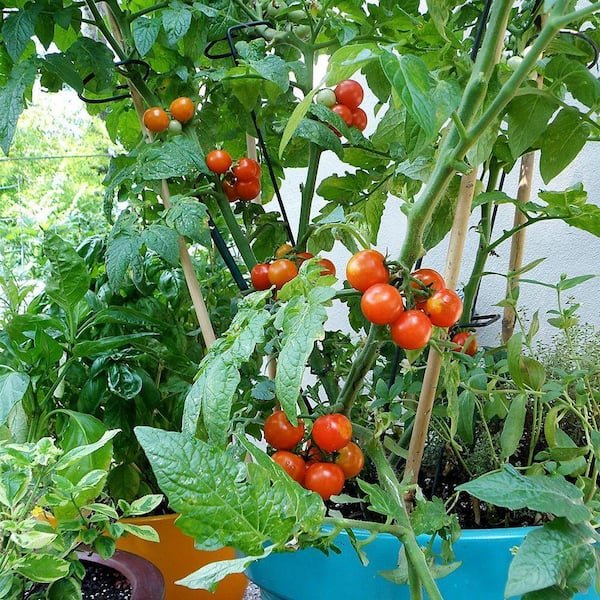
Optimal Harvesting Time for Husky Cherry Red Tomatoes
To ensure the best flavor and texture, it is crucial to harvest Husky Cherry Red tomatoes at the optimal time. Several indicators can help determine when the fruits are ready for picking.
Visual Indicators for Harvesting
Visual cues can provide valuable insights into the readiness of Husky Cherry Red tomatoes for harvesting. When the fruits reach their mature stage, they should have a deep red color and a glossy appearance. Additionally, the skin should feel smooth and firm to the touch, indicating that the fruit is ripe and ready to be harvested.
Squeezability Test
Another method to determine the ripeness of Husky Cherry Red tomatoes is through a gentle squeeze. Ripe tomatoes should feel slightly soft under light pressure, without being overly mushy or too firm. This slight give in the flesh is a good indicator that the fruits are at their peak ripeness.
Color Appearance
The color of Husky Cherry Red tomatoes is an essential indicator of their ripeness. As the fruits mature, they should transition from green to a deep red color. If the tomatoes are still predominantly green, they are likely not fully ripened and may lack optimal flavor and sweetness.
Dealing with Overgrown Husky Cherry Red Tomatoes
Sometimes, Husky Cherry Red tomatoes may become overgrown, exceeding their typical size range. Several factors can contribute to this, and it is important to address the situation promptly to maintain the overall health of the plants and the quality of the harvest.
Causes of Overgrown Tomatoes
Overgrown Husky Cherry Red tomatoes can be a result of various factors. Inadequate spacing between plants, excessive nutrient availability, and irregular pruning and training practices can contribute to the plants focusing their energy on fruit development at the expense of controlling size. Additionally, irregular fruit thinning and inconsistent watering can also lead to larger than average tomatoes.
Methods to Reduce Size of Overgrown Tomatoes
If faced with overgrown Husky Cherry Red tomatoes, there are a few steps you can take to reduce their size. Regular pruning and training can help redirect the plant’s energy towards proper fruit development. Additionally, reducing nutrient availability and ensuring consistent watering practices can promote more moderate fruit growth. However, it is essential to address these issues before the fruits become severely overgrown, as attempting to reduce the size of fully grown tomatoes may negatively impact their overall quality.
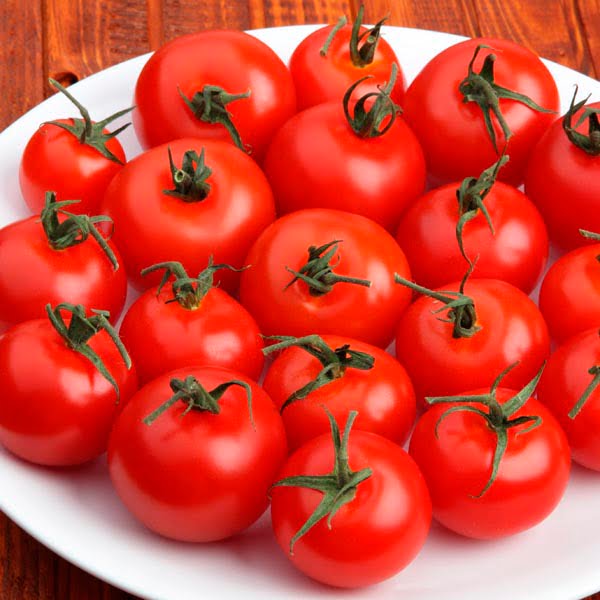
Benefits of Large Husky Cherry Red Tomatoes
While the typical size range for Husky Cherry Red tomatoes is on the smaller side, there are some potential benefits to growing larger fruits. These benefits can range from enhanced flavor and aroma to improved culinary texture and increased marketability.
Enhanced Flavour and Aroma
Larger Husky Cherry Red tomatoes often have a more concentrated flavor and aroma compared to their smaller counterparts. The increased flesh content allows for a fuller, richer taste that can be particularly enjoyable in salads, sandwiches, and sauces. The strong, sweet aroma of ripe, larger tomatoes can also be enticing and add depth to various dishes.
Improved Texture in Culinary Use
The larger size of Husky Cherry Red tomatoes can provide chefs and home cooks with more versatility in their culinary applications. Slicing and dicing larger tomatoes allow for bolder presentations and textures. They can be used as a focal ingredient in caprese salads, stuffed for appetizers, or diced for salsas. The added texture and firmness of larger tomatoes can contribute to the overall mouthfeel and visual appeal of a dish.
Attractiveness for Marketing Purposes
In commercial settings, larger Husky Cherry Red tomatoes can have advantages in terms of marketability. Consumers are often drawn to bigger fruits as they perceive them to be more substantial and potentially more valuable. Their eye-catching appearance can also make them stand out on store shelves, potentially leading to increased sales and demand.
Challenges of Growing Large Husky Cherry Red Tomatoes
While there are benefits to growing larger Husky Cherry Red tomatoes, there are also challenges to consider. These challenges range from increased nutrient requirements to a higher risk of rot and disease, as well as a limited shelf life.
Increased Nutrient Requirements
Larger tomatoes require more nutrients to support their growth. This means that growers need to ensure that their plants receive adequate fertilization to meet the increased nutrient demands. Failure to provide sufficient nutrients can result in stunted growth, nutrient deficiencies, and overall reduced fruit quality.
Risk of Rot and Disease
The larger size of Husky Cherry Red tomatoes can make them more susceptible to certain diseases and rot. Increased fruit surface area provides more opportunities for pathogens and fungi to attack the tomatoes. Regular monitoring, proper spacing, and appropriate disease prevention measures such as fungicide applications can help minimize the risk of rot and disease.
Limited Shelf Life
Larger tomatoes, including Husky Cherry Reds, often have a shorter shelf life compared to smaller varieties. This is because larger tomatoes tend to ripen and soften more quickly, making them more prone to spoilage. If not consumed or processed promptly, the fruits may become overly ripe and lose their desirable texture and flavor.
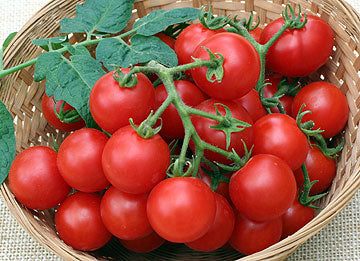
Tips for Growing Large Husky Cherry Red Tomatoes
For those looking to grow larger Husky Cherry Red tomatoes, there are several tips and techniques that can help maximize fruit size and quality.
Selection of Healthy Seedlings
Start by selecting healthy seedlings from reputable sources. Look for strong, disease-free plants with vibrant green leaves and sturdy stems. Healthy seedlings are more likely to develop into vigorous plants capable of producing larger fruits.
Pruning and Training Techniques
Regular pruning and training can help redirect the plant’s energy towards fruit development. Remove excessive foliage and suckers to promote better airflow and light penetration to the developing fruits. Proper staking or trellising can also help support the weight of larger tomatoes, preventing them from touching the ground and reducing the risk of rot.
Optimal Soil Nutrition and pH Level
Provide the plants with a well-balanced nutrient regimen, ensuring they receive adequate amounts of essential elements such as nitrogen, phosphorus, and potassium. Conduct soil tests to determine the pH level and make necessary adjustments to bring it within the recommended range of 6.0 to 7.0. Optimizing soil nutrition and pH level can promote vigorous growth and enhance fruit size.
How to Determine the Size of Husky Cherry Red Tomatoes
To accurately determine the size of Husky Cherry Red tomatoes, there are a few measuring techniques and comparison methods that can be employed.
Measuring Techniques
Measuring the diameter of the tomatoes can provide a quantitative assessment of their size. Using a ruler or calipers, measure the widest part of the tomato horizontally to determine its diameter. Record the measurements to compare the size of multiple tomatoes.
Comparison with Dime, Quarter, or Other Objects
For a quick and visual comparison, you can utilize common household objects such as a dime or a quarter. By placing the tomato next to these objects, you can gain a better understanding of its relative size. Keep in mind that a dime has a diameter of 0.705 inches, while a quarter has a diameter of 0.955 inches, providing a reference point for determining the size of Husky Cherry Red tomatoes.
Variability in Size among Husky Cherry Red Tomatoes
Even within the same plant or batch of seeds, there can be variability in the size of Husky Cherry Red tomatoes. This variability can be attributed to several influences, including seed maturity and quality, as well as spacing and crowding effects.
Influences of Seed Maturity and Quality
The maturity and quality of the seeds can impact the size and consistency of the resulting tomatoes. Seeds collected from fully mature, healthy fruits are more likely to produce uniform and appropriately sized tomatoes. In contrast, seeds from underdeveloped or diseased fruits may lead to variability in size and quality.
Spacing and Crowding Effects
The spacing between plants can also influence the size of Husky Cherry Red tomatoes. Insufficient spacing can result in crowding, as the plants compete for resources such as light, water, and nutrients. Crowded plants may produce smaller, less developed fruits as they try to allocate resources across multiple fruits. Proper spacing is essential to allow each plant to receive adequate resources and optimize fruit size.
Conclusion
Determining the size of Husky Cherry Red tomatoes involves considering various factors, including genetic characteristics, environmental influences, and cultivation methods. While these tomatoes are typically on the smaller side, there are benefits to growing larger fruits, such as enhanced flavor, improved culinary texture, and increased marketability. However, growing larger tomatoes also presents challenges, including increased nutrient requirements, an increased risk of rot and disease, and a limited shelf life. By implementing proper cultivation techniques, growers can optimize fruit size and quality while addressing potential challenges. Ultimately, understanding the factors that impact the size of Husky Cherry Red tomatoes allows for better overall management and more successful harvests.
